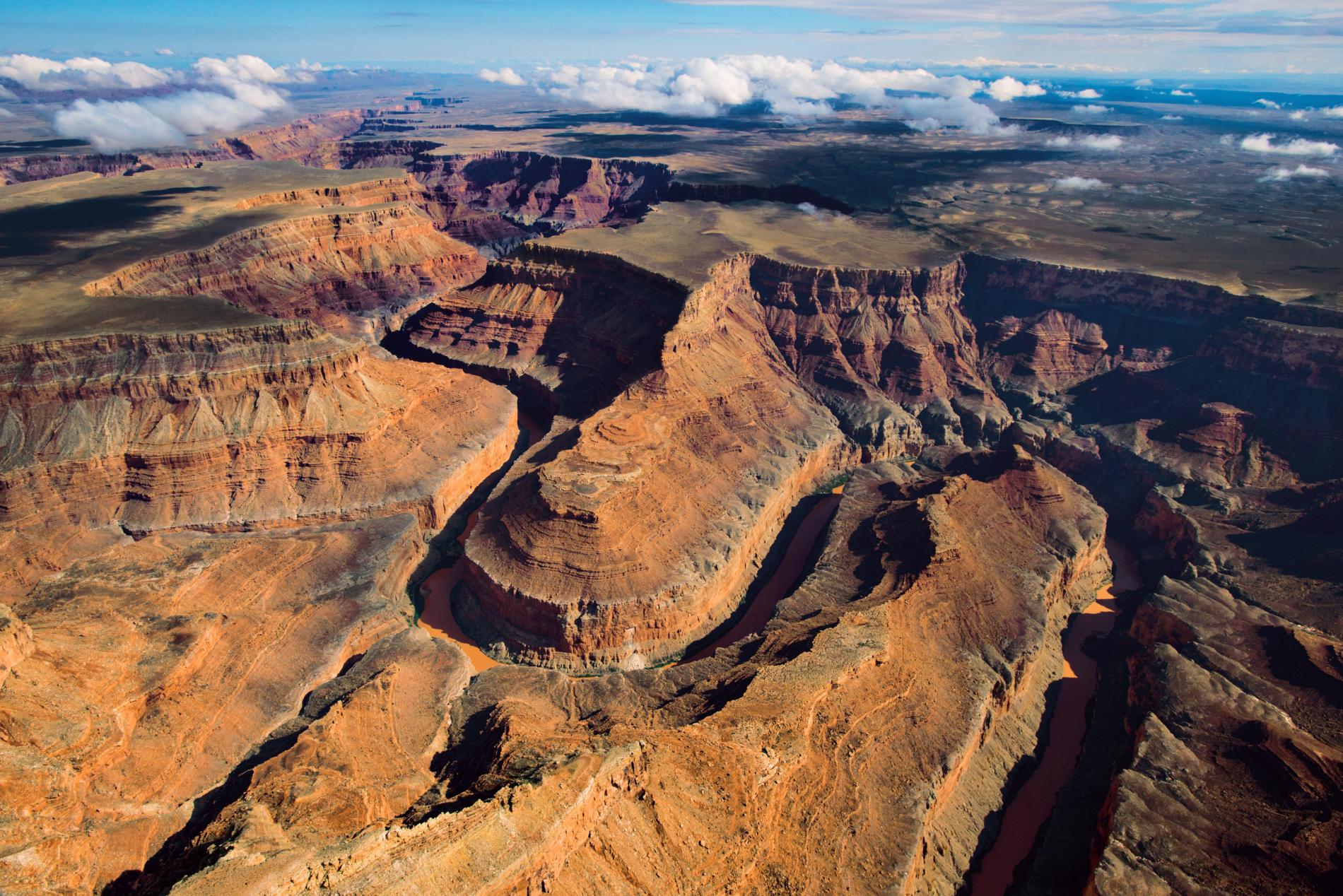The Grand Canyon in Arizona is one of the most popular national parks in the US, drawing 5 million people every year. The erosion by the Colorado river has allowed over 2 billion years of history to be seen in the geology and rock formations. The canyon also holds sacred lands belonging to local tribes such as the Havasupai people. However, with businesses keen to make their millions by exploiting this natural wonder, how long will the park hold out before succumbing to commercialisation?
Apparently not long at all. Plans are already being discussed by the developers to build along the confluence of the River Colorado and Little River Colorado. The businesses will not have challenges from the tribes as it would bring much needed employment to the people of the Navajo. However, the confluence area is seen as sacred lands for the tribal people as their belief indicates it is where their people first emerged. The tribes would welcome development to any other area of the park. The plans are to build an attraction that would stretch over 420 acres of the canyon and provide tourists with a riverside retail park and tramway capable of taking 10,000 tourists down to the Canyon floor a day where currently less than 100 visit.
These developments would not be the only additions to the park. Increased helicopter flights for tourism are also planned as well as a uranium mine. This would dramatically add to the impact humans are making on this park. The ecology and biology alone are unique to the park with some 129 vegetation zones within the canyon due to the elevation and changes in climate allowing a broad range of species to thrive here. With increased pollution within the park, the effect on biological diversity is not known.
Canyon mine is due to open in 2017 and is planned to extract uranium. This could have untold consequences on aquifers and natural oasis within the park. In the past, mines have struggled with the containment of uranium and due to erosion taking place, the pollution has been found in canyon waterways. Another threat to the aquifers comes from the potential plans of development which will all require water, especially if development of Tusayan (a small town outside the park) goes ahead. Investors want to reinvent Tusayan into a resort where there could be spas, hotels and retail complexes. However, if the aquifers and therefore the springs are drained, there could be the loss of biomes within the Canyon.
Helicopter tours are one of the most popular way to see the expansive canyon and explore it from above. There are roughly 94, 000 tours every year within the park run by the Federal Aviation Administration which could be set to rise in the future, posing a risk to the Grand Canyon. On a summers day, there can be a peak of as many as 450 helicopters.
Geologically speaking, the Grand Canyon is home to Vishnu schist which in the deepest part in the gorge contains rock that is over 1.7 billion years old. Historically, the Grand Canyon holds fossils that are extinct today but lived over 12,000 years ago such as yesterday’s camel.
(source: http://www.nationalgeographic.com/magazine/2016/09/grand-canyon-development-hiking-national-parks/)
True wilderness is difficult to come by in an age where travel and exploration is reaching new heights every day through increasing technology. Yet the Grand Canyon was only walked in full in 1963, just 6 years before men were on the moon. This highlights how unusual the Grand Canyon is and shows the need for preservation of the geology and history within it. One problem with the conservation of the park is that the landownership is complex, with inputs of federal and state land as well as tribal reservations. This means that it is not simple to come to an agreement about the land use or gain an agreement of legislation for the whole park. However, the Grand Canyon is such a unique and extreme environment that it should be conserved for future generations to observe, not to be turned into an amusement park for the highest bidder.
Kira Knowles
(Image courtesy of National Geographic)

